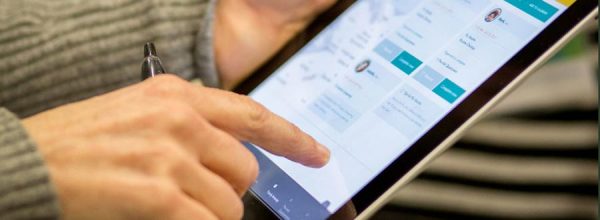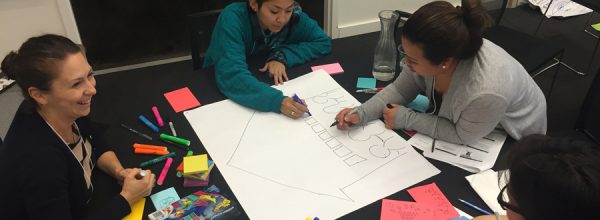Risk taking. Human centered-thinking. Rapid experimentation. Finding the strength to try something that might fail.
These were the principles at the heart of the Innovation Challenge, one of CCI’s first programs to drive new ways of thinking and problem solving in the safety net. Two years later the seven Challenge grantees have implemented unique solutions to common problems, from better discharge materials to prevent hospital readmissions to a digital platform to build a “relational model” of engaging patients. To help other organizations try out similar ideas, we are sharing a variety of tools and resources articulating and supporting these innovations. Look below for a description of each project, and click through to download sample forms, screenshots, pamphlets, job descriptions and other useful materials for quickly implementing these programs.
Health Coverage Enrollment Tools
With the sprawling and at times haphazard push to enroll uninsured patients in the new coverage options offered by health reform, Asian Health Services sought an elegant way to make the enrollment process go smoother for the non-English-speaking patients they serve. Among other resources, they created a simple sheet in Chinese explaining what documents patients need bring to enroll in MediCal or private health insurance.
ProACT Email Notifications
When vulnerable patients are discharged from the hospital, a care manager can help keep them on track for medication and followups. But how to make sure care managers know when patients are hospitalized or discharged? To short-cut a time consuming process of trawling through data, Olive View-UCLA Medical Center created an email notification system to keep care managers in the loop immediately.
Cellular Glucose Monitoring
Neighborhood Healthcare used a cell-enabled blood glucose meter to have patients check their blood sugar levels three times per day. The meter works like other glucose meters, except that the results from each test are downloaded to a database. The panel manager views the patient’s test results and confers with the clinician on any adjustments in medication or other intervention. The initial pilot with 5 patients showed positive results with a drop in HbA1c across all patients (with an average decrease of 31% across 3 patients for whom HbA1c was verified).
Remote House Calls
To help keep in touch with patients after discharge who might otherwise fall through the cracks, Petaluma Health Center leant out special smartphones to allow providers to make remote house calls on patients who are at risk of readmission.
Telephone Urgent Care Visits
The TAPS system (standing for Timely Access to Patient Services) seeks to improve appointment access through telephone visits. Over the course of a few months, the San Francisco’s Department of Public Health TAPS team saw over 600 patients, with 82% of patients able to resolve their concerns over the phone. This contributed to a decrease of about 500 calls in the Nurse Advice Line referrals to Urgent Care and Primary Care.
Organizing Around Transition Points
Care transitions from hospital to primary care can be a vital weak point in the healing process, and too often communication failures here can lead to preventable readmissions. To smooth these transition points, San Joaquin General Hospital created materials to help them keep better track of the process, and to help patients understand their care plan fully when they leave the hospital.
Engaging Patients With dScout
To build a more intimate and trusting relationship between care team and individual patients, West County Health Centers used a corporate ethnography platform called “dScout” to engage patients on “missions” of sharing ideas and images about their life through a smartphone app. Primarily used by companies to gather real-time user feedback and in-the-moment ideas, West County used dScout both to get to know their patients better (as well as their ideas of hope and comfort and the support structures they have in their lives), as well as to survey staff about morale.





